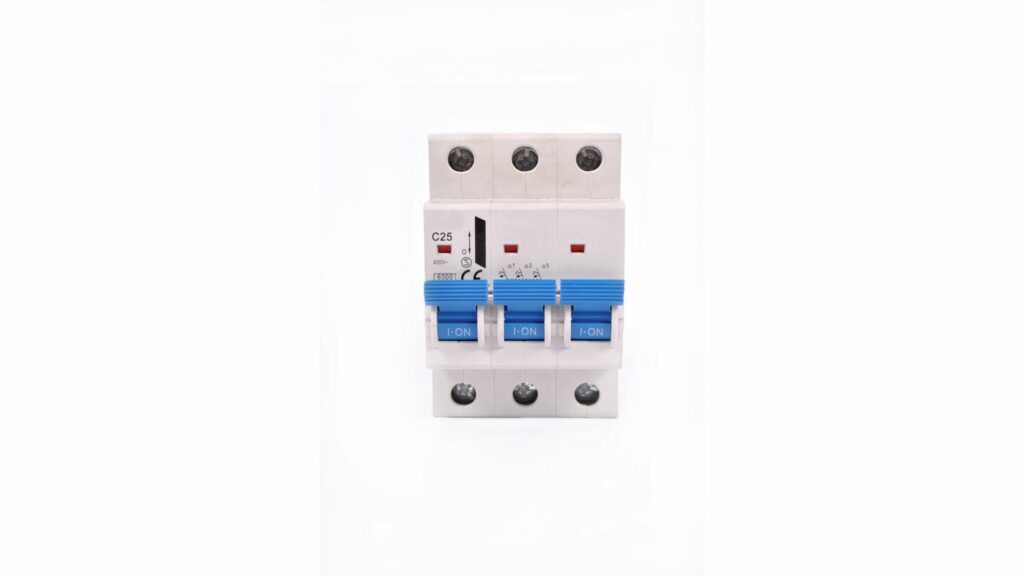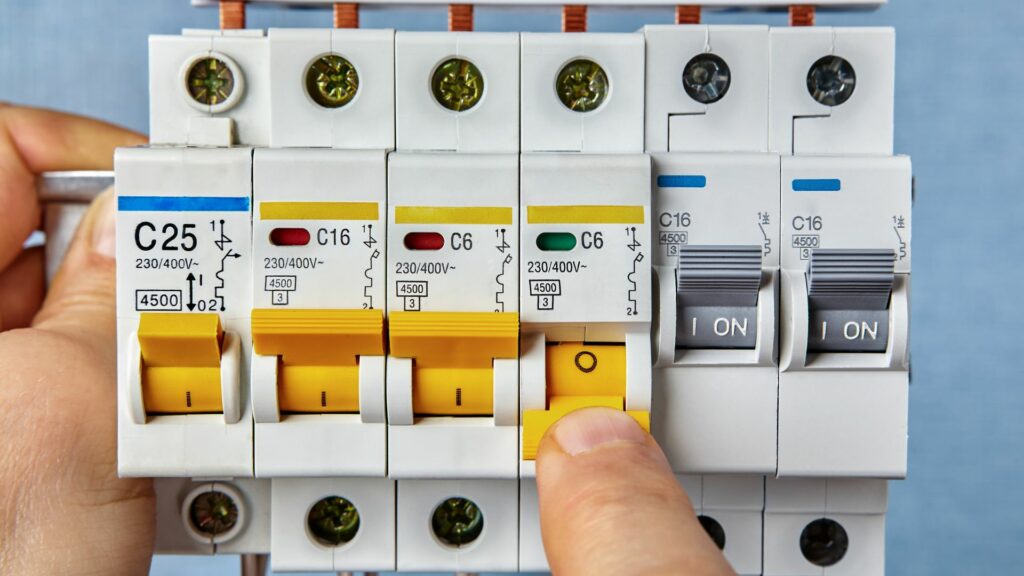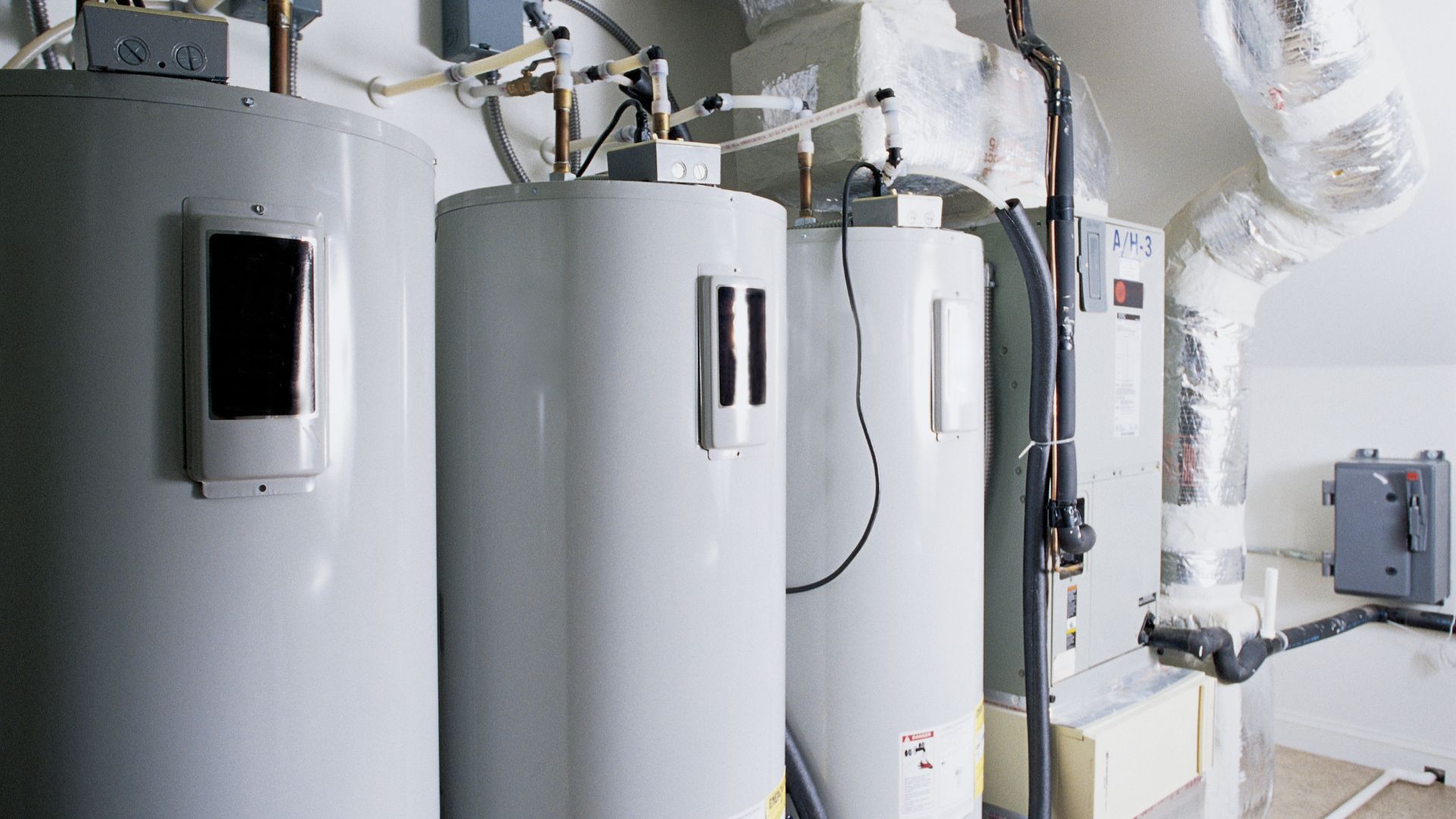Is your breaker too small or too large for the water heater? How do you determine the correct breaker size? What if you make the wrong choice? This guide will tell you what to do.
What Size Breaker For Water Heater?
| HEATER WATTAGE | BREAKER SIZE (120V) | BREAKER SIZE (220V) |
| 2000W | 25A | 15A |
| 3000W | 35A | 20A |
| 3500W | 40A | 25A |
| 3800W | 45A | 25A |
| 4500W | 50A | 30A |
| 5500W | 60A | 35A |
| 6000W | 65A | 40A |
| 9000W | 100A | 55A |
| GALLON SIZE | BREAKER SIZE |
| 10 | 20A – 30A |
| 20 | 20A – 30A |
| 30 | 30A |
| 40 | 30A |
| 50 | 30A |
How To Determine The Correct Breaker Size For Water Heater?
AO Smith has a guide that warns people about the dangers of selecting the wrong breaker size. The breaker will trip repeatedly. While that sounds inconvenient, it is the best-case scenario. If the breaker fails to trip, your house may burn to the ground because the wires overheated and ignited.
Use these steps to select the correct breaker size:
1). Find Your Heater’s Wattage.
This is the first and most crucial step because the information you gather here will influence every other step. If you get the wrong wattage, you are bound to choose the wrong breaker. Keep the following in mind:
- Heating Elements – While the tank size influences your water heater selection, it doesn’t determine the wattage. A heater’s wattage is concerned with the heating elements. You have two of them: one at the top and another at the bottom.
- Heater Type – The heater type matters. For instance, electric heaters with tanks have an average wattage of 4500 watts. They use more power than most other options. Tankless electric heaters are more energy efficient in the long run because they only warm the water when you need it. However, their wattage is slightly higher. Gas heaters are the most efficient. According to Conserve-Energy-Future, they use an average of 1,440 watts (115 – 120V).
- Manual – Check the manual for the wattage. You can also look at the label on the appliance.
2). What Voltage Does Your Heater Require?
Most heaters use 240V. But the market has plenty of 120V options. Your home’s voltage should match the heater’s needs. Some people are convinced that 240V heaters cannot work in the average US home because the country uses 120V.
However, power from the grid enters residential settings via two 120V legs. A contractor can combine those legs to provide 240V. They will do this when they hardware the appliance. The voltage matters because it factors into your calculations.
3). Amperage
On its own, the wattage and voltage are useless. They don’t tell you anything because the breaker size is measured in amps. In other words, if you have a 1440W heater, how can you compare it to your home’s 15A breaker?
You can’t. Wattage and amps are different units of measurement. Your only hope is to bridge the gap by turning the watts into amps using this formula: Watts/Volts. For instance, 4500 watts are the equivalent of 18.75 amps on a 240V system.
Once you know the heater’s amps, you can compare them to the breaker’s amps. The breaker’s amps should exceed the heater’s amps. If the heater has a higher amperage, it will trip the breaker whenever it runs.
4). Breaker Size

If you have an 18.75A heater, you know it can’t run on a 15A circuit. Most homes use 15A and 20A circuits. But an 18.75A heater would overload a 15A circuit. Does that mean 20A is the correct answer?
Not, it isn’t. Yes, an 18.75A heater can run on a 20A circuit without causing an overload. But what happens when a short circuit occurs? What if the heater develops a defect and draws more than 18.75 amps?
Can the 20A circuit accommodate the appliance in such scenarios? It cannot, which is why contractors always multiply the heater’s amps by 125 percent to get the breaker size. For instance, if you multiply 18.75 amps by 125 percent, you get 23.43 amps.
23.43A is the optimal breaker size for an 18.75A heater. But 23.43A breakers don’t exist. You must round off to 25A. You can also use 30A to be on the safe side. If things go wrong on a 30A circuit, the 30A breaker can accommodate the extra surge of current without starting a fire. It has some breathing room.
You can apply this approach to every heater you encounter. For instance, you select the breaker size for a 1,440W heater by dividing 1,440 watts by 240V. This gives you six amps. Multiple 6A by 125 percent to get 7.5 amps. This shows that a 1,440W heater can survive on a 15A circuit.
5). Wire Size
The last consideration is also the most important. Once you identify the breaker size, you must pair it with the appropriate wire size. After all, the breaker exists to prevent the wires from overheating. It can only perform this task if you select the correct gauge for each breaker.
You can accomplish this task with ease once you choose the breaker size because the NEC provides tables that reveal the wire size for each ampacity. For instance, if you’ve decided to install a 20A breaker for the 18.75A heater, you need 12-gauge wiring.
If you prefer a 30A breaker, get a 10-gauge cable. Selecting the correct breaker size won’t help if the wire is too large or too small. Don’t base the wire size on the heater’s amps. For instance, do not look for a wire size that transmits 18.75 amps.
This defeats the purpose of applying the 125 percent rule. Even if you buy a 30A breaker for your 18.75A heater, the wires will overheat during a malfunction because you chose a gauge that accommodates 18.75 amps instead of 30 amps.
What Does The NEC Say About It?
- The heater should only use 80 percent of the breaker’s total capacity. For instance, you can only use 16 amps on a 20A circuit. Therefore, you should calculate the viability of a 20A breaker with 16 amps in mind, not 20 amps. Once again, the goal is to give the heater some breathing room in case things go wrong.
- You’re encouraged to hardwire the breakers.
What Happens If I Use Oversized Breaker For Water Heaters?

For a breaker to be oversized, it means that the breaker is larger than the wire gauge. For instance, a 30A breaker requires 10AWG. If you add 10AWG to a 40A breaker, the breaker is oversized.
This is a bad thing because 10-gauge conductors can withstand 30 amps of current. And if the load exceeds 30 amps, the breaker will trip to protect the wires from overheating. If the breaker fails, the wires will melt and start a fire.
Fortunately, you can trust the average 30A breaker to respond quickly. But what happens when you replace it with a 40A breaker? The 40A breaker will only trip when the load’s electrical draw exceeds 40 amps.
But the 10AWG wires cannot withstand 40 amps. In other words, they will melt long before the breaker responds. In fact, if the load exceeds 30A but stays below 40A, the wires will overheat, but the breaker won’t trip.
A layperson will conclude that the breaker has malfunctioned without realizing they selected the wrong size for their wires.
Admittedly, oversizing is only dangerous if you exceed the wire’s capacity. For instance, 10-gauge wiring can survive on a 40A circuit if the load is less than 30 amps. But this is a risk. Unless you instruct everyone in your home to keep the load below 30 amps, you cannot trust the breaker to protect you.
Eventually, someone will attach a heavy load, and the wires will overheat. Don’t expect a circuit with an oversized breaker to pass inspection. Oversized breakers are against the rules.
What Happens If I Use Undersize Breaker For Water Heater?
If you must choose between the two, undersizing is safer than oversizing. Undersizing means that the breaker is too small.
For instance, if you have a 25A breaker supporting a 30A load, the breaker is undersized. Oversizing is dangerous because the wires will overheat before the breaker can take action.
Undersizing is merely inconvenient because you will lose power repeatedly. The breaker will trip whenever the load starts running because the breaker size is smaller than the load size. Undersizing is dangerous because you don’t want to trip your breaker over and over again.
First of all, it will wear out at a faster rate. Secondly, it may fail at an inopportune moment, introducing a fire and electrocution hazard.
Related Post:

